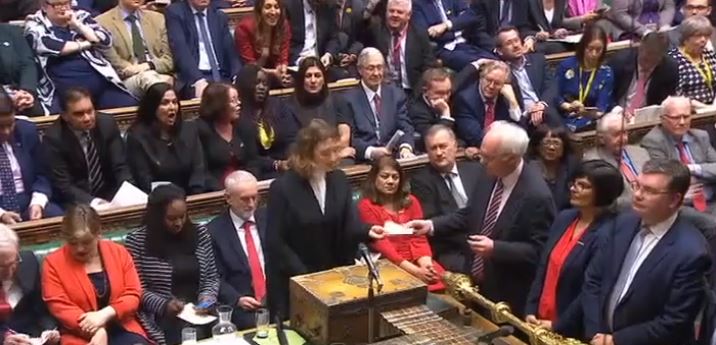- 12/03/2019
- Posted by: Valerie Vaz MP
- Category: News

The Government’s Withdrawal Agreement was agreed with the European Union on 25 November 2018. It was HM Opposition that first called for a ‘meaningful vote’, and after two years of negotiations, the Government scheduled the ‘meaningful vote’ to be on 11 December 2018. However, the Government fearing that it would lose then withdrew the vote.
The ‘meaningful vote’ was then brought back to the House on 15 January 2019 and the House rejected the Government’s Brexit deal by 230 votes, the largest Government defeat in history. The Government committed to bring a revised deal to the House by 13 February 2019 but did not because it knew that it would lose the vote. Since then, not a word of the Withdrawal Agreement or the Political Declaration has changed. The Attorney General’s advice on the day of the vote confirmed that there were no significant changes to the backstop and that “the legal risk remains unchanged”.
The House of Commons voted on the below motion on Tuesday 12 March 2019:
That this House approves for the purposes of section 13(1)(b) of the European Union (Withdrawal) Act 2018 the following documents laid before the House on Monday 11 March 2019:
(1) the negotiated withdrawal agreement titled ‘Agreement on the withdrawal of the United Kingdom of Great Britain and Northern Ireland from the European Union and the European Atomic Energy Community’;
(2) the framework for the future relationship titled ‘Political Declaration setting out the framework for the future relationship between the European Union and the United Kingdom’;
(3) the legally binding joint instrument titled ‘Instrument relating to the Agreement on the withdrawal of the United Kingdom of Great Britain and Northern Ireland from the European Union and the European Atomic Energy Community’, which reduces the risk the UK could be deliberately held in the Northern Ireland backstop indefinitely and commits the UK and the EU to work to replace the backstop with alternative arrangements by December 2020;
(4) the unilateral declaration by the UK titled ‘Declaration by Her Majesty’s Government of the United Kingdom of Great Britain and Northern Ireland concerning the Northern Ireland Protocol’, setting out the sovereign action the UK would take to provide assurance that the backstop would only be applied temporarily; and
(5) the supplement to the framework for the future relationship titled ‘Joint Statement supplementing the Political Declaration setting out the framework for the future relationship between the European Union and the United Kingdom of Great Britain and Northern Ireland’, setting out commitments by the UK and the EU to expedite the negotiation and bringing into force of their future relationship.
Not a single word of the Withdrawal Agreement or the Political Declaration has changed. The Attorney General’s advice on the day of the vote confirmed that there were no significant changes to the backstop and that “the legal risk remains unchanged”.
The Government’s deal was defeated yet again, this time by a majority of 149 votes (Ayes: 242, Noes: 391), the fourth worst defeat for a Government. I voted against the deal as it is a bad deal for the UK. This was the fourth time the deal had been defeated, twice through the bill being pulled and twice through Members voting it down in Parliament.
Labour has repeatedly offered to work with the Government on a Brexit deal which would protect workers’ rights and the environment. The Labour Party’s five demands that would need to be secured for the Party to support the deal are:
- a permanent and comprehensive customs union with the EU
- close alignment with the single market underpinned by shared institutions and obligations
- dynamic alignment on rights and protections
- commitments on participation in EU agencies and funding programmes, including in areas such as the environment, education, and industrial regulation
- unambiguous agreement on the detail of future security arrangements, including access to the European Arrest Warrant and vital shared databases

